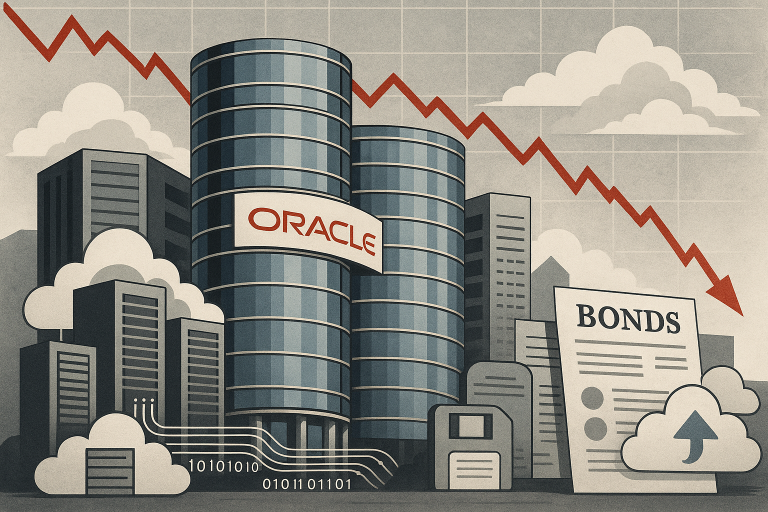Oracle shares dropped 11% in premarket trading on Thursday, extending the previous session’s losses after the company reported quarterly results that underscored both the promise and the pressure of its accelerating cloud ambitions.
While adjusted earnings beat analyst expectations by a wide margin, revenue fell short, raising fresh questions about the sustainability of Oracle’s aggressive infrastructure build-out at a time when the company is taking on unprecedented levels of debt.
Revenue miss weighs on sentiment despite earnings beat
Oracle reported quarterly revenue of $16.1 billion, missing Wall Street’s estimate of $16.2 billion.
The shortfall came despite surging demand for artificial intelligence infrastructure and strong cloud services growth.
Adjusted earnings per share reached $2.26, far above the $1.64 expected and a notable increase from $1.47 last year.
Much of that gain, however, was driven by Oracle’s $2.7 billion sale of its stake in Ampere, which boosted pretax earnings by 91 cents per share.
Cloud revenue rose 34% year-on-year to nearly $8 billion, now accounting for almost half of the company’s total revenue.
The cloud infrastructure business — renting servers and computing power to customers — grew even faster, with a 68% jump in sales.
Meanwhile, Oracle’s legacy packaged software business declined 1% from a year earlier.
Despite the strong cloud momentum, the company’s guidance disappointed investors, triggering a deeper slide in the stock.
Oracle shares fell to $197.8 in early trading, down sharply from recent highs.
Other AI-linked names also came under pressure: Nvidia, Microsoft, CoreWeave and AMD all traded lower premarket.
Rising capital expenditure and debt levels raise red flags
Oracle’s expansion into cloud infrastructure has reshaped its financial profile.
The company has spent $35 billion on capital expenditures over the past 12 months, resulting in free cash flow losses of $13 billion.
Analysts say the shift to cloud — which carries lower margins than Oracle’s traditional software — is weighing on profitability.
Adjusted operating margin fell to 41.9% from 43.4% a year earlier.
The firm has increasingly relied on debt to support these investments.
Oracle raised $18 billion in a jumbo bond sale in September, one of the largest ever for the tech sector.
It has also secured billions in construction loans tied to new data centers in New Mexico and Wisconsin.
Citi analyst Tyler Radke estimates the company may need to raise $20 billion to $30 billion in debt annually over the next three years.
Credit markets have taken note: the price of Oracle’s debt has fallen, while credit default swap prices — a measure of default risk — have risen.
After briefly easing, swap prices began climbing again following the earnings release.
Cloud backlog grows but execution risks persist
Oracle’s multi-year backlog reached $523 billion, up $68 billion from the previous quarter, driven in part by the company’s massive contract with OpenAI.
The scale of that agreement, however, has drawn scrutiny given OpenAI’s substantial funding requirements.
Oracle shares have fallen 33% since concerns emerged about the feasibility of executing such commitments.
Analysts remain divided.
Some highlight the long-term opportunity from AI infrastructure demand, while others caution that heavy spending, rising leverage, and shrinking margins pose risks.
Oracle maintains it can fund its expansion while preserving its investment-grade credit rating.
Chief executive Clay Magouyrk said required financing would fall below the $100 billion some analysts have forecast.
As Oracle ramps up construction on Project Stargate — a multibillion-dollar push to build next-generation data centers — investors appear increasingly focused on whether the company can balance rapid cloud expansion with financial discipline.
The post Oracle plunge in premarket after results spark concerns over cloud profitability appeared first on Invezz










